Explore Our Tours
Most Popular Destinations
Discover Bhutan like never before with Pathfinder Adventures! We offer expertly curated tours, travel services, and taxis to take you to the most breathtaking destinations. Whether you seek cultural wonders, scenic landscapes, or hidden gems, we ensure an unforgettable journey filled with adventure and comfort.
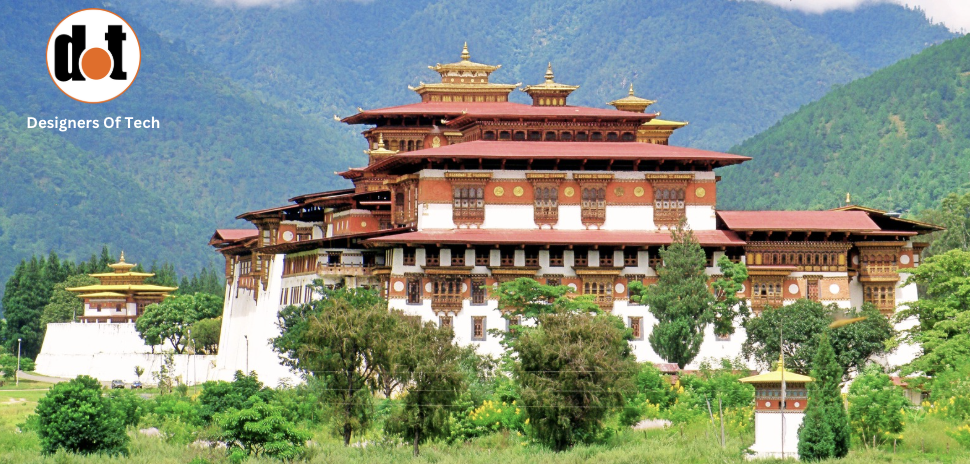
Discover Punakha:
A Serene Escape into Bhutan’s Heart
Nestled between the fertile valleys and surrounded by majestic mountains, Punakha is a captivating destination that offers a perfect blend of history, culture, and breathtaking landscapes. Known for its stunning architecture, tranquil rivers, and lush countryside, Punakha is a must-visit for anyone seeking to explore the heart and soul of Bhutan.
Explore the Majestic Punakha Dzong
Punakha is home to the iconic Punakha Dzong, one of Bhutan’s most impressive fortresses and monasteries. Located at the confluence of the Pho and Mo Rivers, this grand structure is a stunning example of traditional Bhutanese architecture, with intricate woodwork, towering walls, and peaceful courtyards. The dzong holds great historical and spiritual significance and serves as the winter residence of the central monk body.
Embrace Nature’s Beauty
Surrounded by rolling hills, terraced rice fields, and lush forests, Punakha offers a serene retreat in nature. Whether you’re relaxing by the riverside, hiking through scenic trails, or enjoying the view from a traditional farmhouse, the natural beauty of Punakha will leave you in awe. The fertile valleys are especially beautiful during the spring and summer months, with vibrant greenery and colorful flowers.
Walk Across the Iconic Suspension Bridge
Punakha is home to Bhutan’s longest suspension bridge, which offers stunning views of the valley below. Spanning 160 meters across the Mo Chhu River, this bridge connects the Punakha Dzong with the surrounding areas. Walking across the bridge is a thrilling experience that gives you an unforgettable perspective of the surrounding landscape.
Chimi Lhakhang – The Temple of Fertility
Located a short distance from Punakha, Chimi Lhakhang is one of Bhutan’s most fascinating temples. Dedicated to Drukpa Kunley, the “Divine Madman,” this temple is famous for its association with fertility. It’s a popular pilgrimage site, and visitors can explore the quirky history of the temple while enjoying its peaceful surroundings.
Adventure Awaits in Punakha
For adventure enthusiasts, Punakha offers exciting outdoor activities such as white-water rafting on the Mo Chhu and Pho Chhu rivers. Whether you're an experienced rafter or a first-timer, this thrilling experience lets you take in the stunning scenery while riding the rapids. Punakha is also an excellent base for hiking and exploring remote monasteries, allowing you to connect with the natural beauty of Bhutan’s countryside.
A Glimpse into Bhutanese Life
Punakha offers visitors an authentic Bhutanese experience with its picturesque villages, traditional architecture, and warm-hearted locals. Take a walk through the countryside, interact with the friendly villagers, and learn about Bhutan’s agricultural practices. The valley’s laid-back vibe makes it the perfect place to unwind and discover the simplicity and beauty of Bhutanese life.
Perfect for All Seasons
Punakha is a year-round destination, with each season bringing its unique charm. Spring and summer showcase lush greenery, blooming flowers, and vibrant rice fields, while autumn offers crisp mountain air and golden harvests. Winter offers a peaceful atmosphere and clear views of the snow-capped Himalayas, making Punakha an ideal destination at any time of the year.
Why Choose Us for Your Punakha Adventure?
Our travel agency offers curated tours to Punakha that allow you to experience the best of what this magical destination has to offer. Whether you’re looking to explore the historical sites, immerse yourself in nature, or enjoy thrilling adventures, we ensure that your visit to Punakha is unforgettable. With expert guides and personalized itineraries, we help you create memories that will last a lifetime.
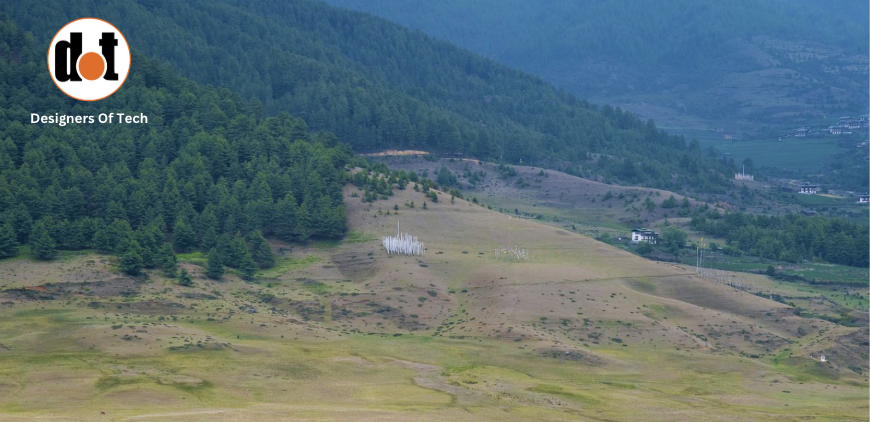
Bhutan’s Hidden Gem
Explore the Serenity of Phobjikha Valley
Nestled between the fertile valleys and surrounded by majestic mountains, Punakha is a captivating destination that offers a perfect blend of history, culture, and breathtaking landscapes. Known for its stunning architecture, tranquil rivers, and lush countryside, Punakha is a must-visit for anyone seeking to explore the heart and soul of Bhutan.
Explore the Majestic Punakha Dzong
Phobjikha Valley, one of Bhutan’s most enchanting and peaceful destinations, offers a unique blend of breathtaking natural beauty, rich cultural heritage, and exceptional wildlife. This pristine valley is perfect for those looking to experience Bhutan’s unspoiled landscapes and tranquil atmosphere. Here’s why Phobjikha Valley should be at the top of your Bhutan travel list.
Home to the Endangered Black-Necked Cranes
Phobjikha is renowned for being the winter home of the rare Black-Necked Cranes, which migrate from Tibet. These magnificent birds, with their graceful presence, are a symbol of Bhutan’s commitment to preserving its unique wildlife. Visiting Phobjikha during the winter months offers an incredible opportunity to witness the cranes in their natural habitat, making it a dream destination for birdwatchers and nature lovers alike.
Breathtaking Natural Beauty
The valley is a paradise for outdoor enthusiasts, with its expansive wetlands, rolling hills, and stunning Himalayan backdrop. Phobjikha is a place where lush green meadows and tranquil rivers meet rugged mountains. Whether you’re hiking through forested trails, cycling along scenic paths, or simply enjoying a peaceful walk through the valley, Phobjikha’s untouched beauty will leave you in awe.
Gangtey Monastery – A Spiritual Haven
Phobjikha is home to the Gangtey Monastery, one of Bhutan’s most important and peaceful religious sites. Perched on a hilltop overlooking the valley, this 17th-century monastery provides visitors with stunning views and a chance to learn about Bhutan’s rich Buddhist traditions. The monastery also serves as the seat of the Pema Lingpa tradition and is a place of spiritual significance for many Bhutanese.
Tranquil Atmosphere for Reflection and Relaxation
Phobjikha offers a serene and peaceful atmosphere that allows visitors to escape the noise and stress of everyday life. The valley’s quiet charm makes it the perfect place for relaxation, meditation, and introspection. Whether you’re unwinding in a traditional farmhouse, enjoying the landscape, or simply reflecting by the river, Phobjikha’s calmness will rejuvenate your spirit.
Cultural Encounters in Traditional Villages
Phobjikha is dotted with small, traditional villages where time seems to slow down. As you wander through the valley, you’ll encounter warm and welcoming locals, learn about traditional Bhutanese farming practices, and experience the simplicity of life in rural Bhutan. Phobjikha offers an authentic cultural experience, allowing you to gain insight into Bhutan’s rich heritage and unique way of life.
Scenic Hikes and Nature Trails
The Phobjikha Valley is crisscrossed with scenic trails and nature walks that let you explore the valley’s diverse flora and fauna. The Gangtey Nature Trail, which runs through the valley’s lush forests and open meadows, offers an easy yet rewarding hike that is suitable for all levels. These trails provide an opportunity to immerse yourself in the valley’s beauty while discovering its rich biodiversity.
A Year-Round Destination
Phobjikha Valley is a year-round destination, with each season offering its own charm. During the winter months, the valley is blanketed in a peaceful white sheen as snow falls over the landscape, making it an enchanting winter retreat. In spring and summer, the valley is lush and vibrant, with wildflowers in full bloom and the fields turning a vibrant green. The autumn months bring cooler temperatures and golden hues to the landscape, making it a perfect time for hiking and exploring.
A Sustainable and Responsible Travel Experience
Phobjikha is known for its sustainable approach to tourism, and a visit to the valley is a chance to contribute to the preservation of its delicate environment. The valley’s conservation efforts, which include protecting the Black-Necked Cranes and preserving local ecosystems, are essential to maintaining its natural beauty for future generations. When you visit Phobjikha, you’re not only experiencing one of Bhutan’s most beautiful regions, but you’re also supporting responsible and eco-friendly tourism.
Why Choose Us for Your Punakha Adventure?
Our travel agency offers personalized tours to Phobjikha Valley, ensuring that you experience the best of what this stunning region has to offer. From guided wildlife tours to cultural immersions and nature hikes, we craft itineraries that cater to your interests and preferences. With expert guides and thoughtful itineraries, we ensure your visit to Phobjikha is a memorable and enriching experience.
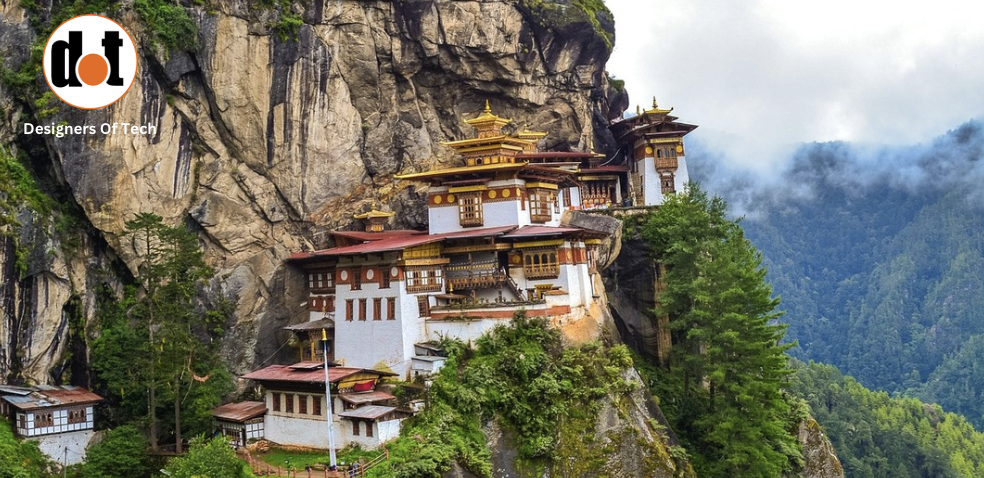
Bhutan’s Jewel
Discover the Timeless Beauty of Paro Valley
Nestled in the western part of Bhutan, Paro Valley is one of the country’s most iconic destinations. Known for its stunning landscapes, rich cultural heritage, and historical significance, Paro offers travelers an unforgettable experience that blends the old with the new. Whether you're a history buff, a nature lover, or a spiritual seeker, Paro promises to captivate your senses.
Tiger’s Nest Monastery: A Spiritual Journey
Paro is home to one of Bhutan’s most iconic landmarks, the Tiger’s Nest Monastery (Paro Taktsang). Perched high on a cliffside 900 meters above the valley floor, this sacred monastery is a must-visit for anyone traveling to Bhutan. A challenging yet rewarding hike leads you to this awe-inspiring site, where you can enjoy breathtaking views of the valley below and immerse yourself in the peaceful spiritual atmosphere.
Historical and Cultural Richness
Paro Valley is steeped in history, and its rich cultural heritage is visible in its many monasteries, temples, and fortresses. The Paro Dzong (Rinpung Dzong) is an architectural masterpiece, showcasing Bhutanese artistry and design. Serving as both a fortress and a monastery, it is a central hub for the region’s religious and administrative activities. The National Museum of Bhutan, housed in the Ta Dzong, offers a fascinating glimpse into Bhutan’s history, with artifacts that date back centuries.
Breathtaking Natural Beauty
With its lush green valleys, meandering rivers, and snow-capped peaks, Paro Valley is a paradise for nature lovers. The valley is dotted with traditional Bhutanese farms and picturesque landscapes that provide a peaceful escape into nature. Whether you’re exploring the valley’s scenic hiking trails, photographing its pristine beauty, or simply relaxing by the river, Paro offers an immersive experience in the heart of the Himalayas.
Authentic Bhutanese Culture
Paro Valley is an ideal place to experience authentic Bhutanese culture. Stroll through charming villages, meet friendly locals, and learn about traditional farming practices and Bhutanese customs. The valley is home to several important spiritual sites, including Kyichu Lhakhang, one of the oldest temples in Bhutan, where you can experience the deep spiritual connection that the Bhutanese people have with their land and traditions.
Charming Villages and Local Experiences
Whether you're seeking adventure or relaxation, Paro has something for everyone. The valley offers numerous trekking opportunities, including the famous hike to Tiger’s Nest Monastery, which takes you through lush forests and past pristine waterfalls. For those seeking a more leisurely experience, the peaceful surroundings of Paro are perfect for meditation, reflection, or simply unwinding at a traditional Bhutanese lodge.
A Year-Round Destination
Paro is home to several charming villages where you can experience the simplicity and warmth of rural Bhutan. Visit a local farmhouse, enjoy a traditional Bhutanese meal, or explore the markets for handcrafted souvenirs. The valley’s laid-back atmosphere and close-knit communities offer a genuine and welcoming experience that will make you feel right at home.
Why Choose Us for Your Paro Adventure?
Our travel agency offers customized tours to Paro Valley, ensuring you experience the best of this remarkable region. Whether you’re trekking to Tiger’s Nest, exploring ancient monasteries, or enjoying the tranquility of the valley, we design itineraries that cater to your interests and provide you with a personalized experience. With expert guides and thoughtfully crafted tours, we ensure that your visit to Paro is a memorable journey filled with adventure, culture, and relaxation.
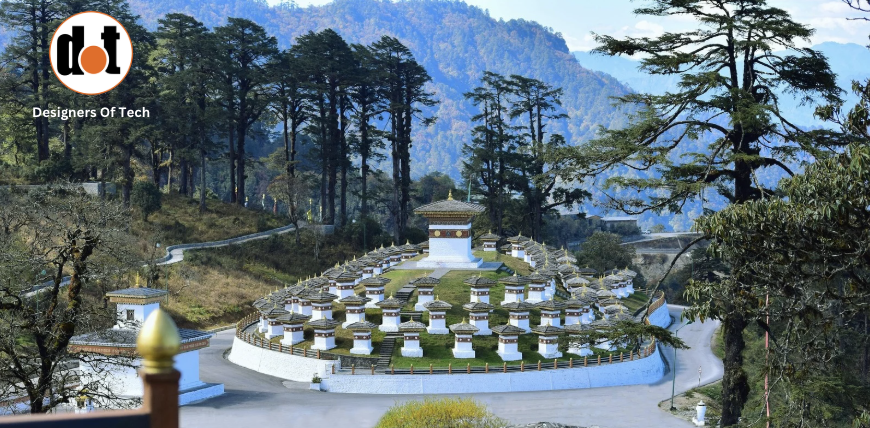
Bhutan’s Capital City
Experience the Vibrancy of Thimphu
Thimphu, Bhutan’s bustling capital, is a unique blend of tradition and modernity. Nestled in a picturesque valley, this vibrant city offers visitors a perfect mix of cultural heritage, stunning landscapes, and exciting urban experiences. Whether you’re a history enthusiast, an adventure seeker, or someone looking to immerse in local culture, Thimphu has something special for everyone.
Cultural and Spiritual Hub of Bhutan
Thimphu is the heart of Bhutan’s culture and spirituality. The city is home to some of Bhutan’s most important religious and cultural landmarks, including the majestic Tashichho Dzong, a stunning fortress-monastery that serves as the seat of the Bhutanese government and the central monk body. The Memorial Chorten, built in memory of the Third King of Bhutan, is a revered site for locals, where they gather to meditate and pray.
The Majestic Buddha Dordenma Statue
Standing tall at over 50 meters, the Buddha Dordenma Statue is one of the largest Buddha statues in the world. Located on a hilltop overlooking Thimphu Valley, this magnificent statue offers sweeping views of the city and the surrounding landscapes. A visit to the Buddha Dordenma is both a spiritual experience and a chance to admire the serene beauty of Bhutan’s capital.
A Blend of Tradition and Modernity
Thimphu is where old meets new. The city’s skyline features traditional Bhutanese architecture alongside modern buildings, creating a unique and harmonious atmosphere. Explore the lively Centenary Farmers Market, where you can experience Bhutanese daily life and sample fresh local produce. Wander through the city’s bustling streets filled with shops, cafes, and cultural sites that highlight both Bhutan’s rich heritage and its evolving modernity.
Bhutan’s Museums and Artifacts
Thimphu is home to several fascinating museums that showcase Bhutan’s history, art, and culture. The National Museum of Bhutan offers a captivating glimpse into the country’s past with its collection of traditional artifacts, textiles, and religious items. The National Textile Museum provides an in-depth look at Bhutanese weaving traditions, where you can learn about the intricate and colorful textiles that play an important role in Bhutanese culture.
Scenic Beauty and Outdoor Adventures
Thimphu’s stunning natural surroundings make it a perfect destination for nature lovers and outdoor enthusiasts. Hike to the Phajoding Monastery for panoramic views of the Thimphu Valley, or take a stroll through the lush Motithang Takin Preserve, home to Bhutan’s national animal, the takin. For the more adventurous, Thimphu offers plenty of opportunities for trekking, cycling, and exploring the picturesque landscapes surrounding the city.
Engage with Bhutanese Culture
Thimphu offers an authentic experience of Bhutanese culture. Visit local shops to discover beautiful handcrafted goods such as jewelry, masks, and traditional textiles. Don’t miss the opportunity to attend a Bhutanese Archery match, a beloved national sport, or participate in the Tshechu Festival (if you’re visiting during festival season), where you can experience vibrant traditional dances and ceremonies that celebrate Bhutanese heritage.
Gastronomy of Bhutan
Explore the culinary delights of Thimphu, where you can indulge in authentic Bhutanese cuisine, such as Ema Datshi (spicy cheese and chili), Phaksha Paa (pork with radish), and Suja (butter tea). The city is also home to a variety of international dining options, ranging from cozy cafes to fine-dining restaurants, offering a diverse and delicious experience for all tastes.
A Perfect Base for Bhutan Adventures
Thimphu is not only an exciting city to explore but also an ideal base for discovering other parts of Bhutan. It’s a short drive away from popular destinations like Paro, Punakha, and Phobjikha, making it the perfect starting point for your Bhutan adventure. Whether you’re looking to trek, visit historical sites, or explore remote villages, Thimphu offers easy access to Bhutan’s top destinations.
Why Choose Us for Your Punakha Adventure?
Our travel agency offers tailored tours to Thimphu that allow you to experience the best of this dynamic city and its surrounding areas. Whether you’re looking to explore Bhutan’s history and culture, hike through scenic landscapes, or enjoy local food and traditions, we craft personalized itineraries that cater to your interests. With our expert guides and thoughtfully planned trips, we ensure you get the most out of your visit to Thimphu.
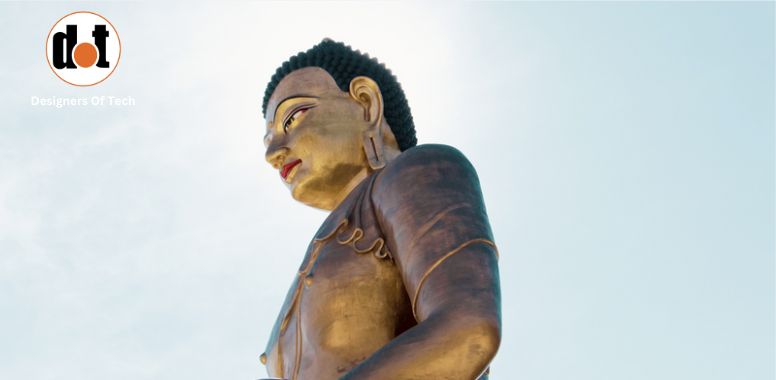
A Himalayan Adventure
Embark on the Jomolhari Trek
The Jomolhari Trek is one of Bhutan's most popular and captivating treks, offering a perfect combination of stunning natural beauty, rich cultural experiences, and challenging mountain landscapes. This iconic trek takes you through high-altitude terrains, alpine meadows, dense forests, and remote villages, all with the backdrop of the majestic Jomolhari Mountain, which rises to 7,314 meters. If you're seeking a thrilling adventure in Bhutan’s pristine wilderness, the Jomolhari Trek is the perfect choice.
A Glimpse of the Majestic Jomolhari Mountain
The Jomolhari Trek is named after the magnificent Jomolhari Peak, which is considered sacred by the Bhutanese. As you trek through Bhutan’s remote landscapes, you’ll be treated to stunning views of the snow-capped mountain, towering above the valley. The trek offers the opportunity to get up close to the base of the peak, where the awe-inspiring vistas of glaciers, rocky cliffs, and towering mountain ranges will leave you breathless.
Trekking Through Picturesque Landscapes
This trek takes you through some of the most beautiful and diverse landscapes in Bhutan. Starting from the charming town of Paro, you’ll gradually ascend into the foothills of the Himalayas, passing lush forests of pine and rhododendron. As you climb higher, the terrain transforms into alpine meadows and valleys dotted with yak herders’ camps, creating a peaceful and serene atmosphere. The trek offers an unforgettable journey through untouched nature.
Cultural Encounters with Remote Villages
The Jomolhari Trek is not only about stunning views but also about experiencing Bhutanese culture up close. As you trek through remote villages such as Shana and Soe, you’ll have the chance to interact with local communities and learn about their way of life. These villages are home to Bhutanese farmers, herders, and monks who follow traditional lifestyles, making this trek an excellent opportunity to engage with Bhutan’s rich cultural heritage.
A Journey for Nature and Wildlife Enthusiasts
Nature lovers and wildlife enthusiasts will find plenty to marvel at during the Jomolhari Trek. The area is home to diverse flora and fauna, including rare species such as the blue sheep, takins, snow leopards, and a variety of bird species. The trek also takes you through Bhutan’s Jigme Dorji National Park, one of the country’s largest protected areas, known for its rich biodiversity.
Challenges and Rewarding Views
The Jomolhari Trek is moderately challenging and offers a rewarding experience for trekkers. The highest point of the trek, Jomolhari Base Camp, sits at an altitude of 4,080 meters, which can lead to some altitude challenges. However, the trek’s stunning scenery and the opportunity to experience Bhutan’s rugged beauty make every step worthwhile. Along the way, you’ll pass through breathtaking valleys, towering cliffs, and pristine rivers, each offering unique photo opportunities and a sense of accomplishment.
Experience Traditional Bhutanese Camping
One of the unique aspects of the Jomolhari Trek is the camping experience. Along the route, trekkers camp in remote areas with spectacular views of the surrounding mountains. The tents are set up by our experienced trekking team, and you’ll enjoy hearty Bhutanese meals cooked by our chefs, allowing you to fully immerse yourself in the wilderness experience. Sleeping under the stars, with the Himalayas as your backdrop, is an experience you’ll never forget.
The Best Time to Trek
The best times to undertake the Jomolhari Trek are during the spring (March to May) and autumn (September to November) months. These seasons offer pleasant temperatures, clear skies, and excellent visibility of the mountains. Spring brings an explosion of wildflowers, while autumn offers crisp mountain air and golden landscapes. Winter and summer months can present challenges due to snow or rain, so spring and autumn are ideal for trekking in this region.
A Perfect Trek for Experienced Trekkers
The Jomolhari Trek is recommended for trekkers with some experience in high-altitude trekking, though it can be completed by those in good physical condition. With some moderate elevation gains, long trekking days, and unpredictable weather, this trek offers a thrilling challenge for experienced hikers who want to immerse themselves in the natural and cultural wonders of Bhutan.
Why Choose Us for Your Jomolhari Trek Adventure?
Our travel agency specializes in customized trekking experiences, and we offer expertly guided Jomolhari Trek tours that ensure safety, comfort, and a truly immersive experience in Bhutan. Our professional trekking team, including experienced guides, cooks, and porters, will ensure you have an unforgettable experience on the trek. We provide high-quality camping equipment, delicious Bhutanese meals, and thorough support to make your adventure as smooth and enjoyable as possible.

Thimpu:
Tsechu Festival
The Thimphu Tsechu is one of Bhutan's most vibrant and significant religious festivals, held annually in the capital city, Thimphu. It takes place in the courtyard of Tashichho Dzong, the majestic fortress that serves as the seat of the Bhutanese government and the central monastic body. Thimphu Tsechu usually falls in September or early October, based on the Bhutanese lunar calendar. It is a must-see event for anyone visiting Bhutan during this time, offering an unforgettable glimpse into the country's spiritual and cultural essence.
Historical Significance
The festival dates back to the 17th century, introduced by the 4th Druk Desi, Tenzing Rabgye (who ruled from 1680 to 1694). It is dedicated to Guru Rinpoche (Padmasambhava), the revered Buddhist saint who is believed to have introduced Vajrayana Buddhism to Bhutan in the 8th century.
Masked Dances (Cham)
Monks and lay performers, dressed in elaborate costumes and terrifying masks, perform sacred dances that depict Buddhist teachings. These dances are believed to cleanse negative karma and bring blessings.
Folk Dances & Songs
Traditional Bhutanese dances and songs are performed, adding a lively and festive atmosphere.
Blessings & Rituals
Devotees gather to receive blessings from high-ranking Buddhist monks and lamas.
Unfurling of the Thongdrel
On the final day, a massive sacred scroll painting (Thongdrel) is unfurled at dawn, and witnessing it is believed to cleanse sins and bring spiritual merit.

Jambay Lhakhang
Drup Festival
The Jambay Lhakhang Drup is one of Bhutan’s most sacred and colorful festivals, celebrated annually at Jambay Lhakhang, a revered temple in Bumthang. This festival is deeply rooted in Bhutanese history and religious traditions, attracting both locals and tourists who seek spiritual blessings and a glimpse into Bhutan’s vibrant culture.
Historical Significance
Jambay Lhakhang is one of the oldest temples in Bhutan, built in the 7th century by the Tibetan King Songtsen Gampo as part of his mission to subdue evil spirits and spread Buddhism in the Himalayas. The Jambay Lhakhang Drup festival is held to honor Guru Rinpoche (Padmasambhava), who introduced Vajrayana Buddhism to Bhutan in the 8th century, and to commemorate the establishment of the temple.
Festival Highlights
The festival spans several days and features a mix of sacred mask dances, fire rituals, and cultural performances.
The Fire Blessing Ritual (Mewang) 🔥
One of the most mesmerizing events of the festival, the Mewang (fire dance), takes place at night. Locals and monks jump over flames, believing it will purify sins, bring good fortune, and ensure fertility for women who wish to conceive.
Mask Dances (Cham) 🎭
Monks perform traditional masked dances, each telling different Buddhist stories. Some of the most significant cham dances include:
- Tercham (The Naked Dance) – Performed by completely nude masked dancers, this rare and sacred dance is believed to bless spectators and drive away evil spirits.
- Guru Tshengye Cham – Depicting the eight manifestations of Guru Rinpoche, this dance symbolizes his power in subduing demons.
Traditional Music, Songs & Folk Dances 🎶
The festival is also filled with lively folk songs and dances, adding to the festive atmosphere. Locals wear their best traditional attire, and families gather to socialize, enjoy picnics, and celebrate together.
Why You Should Attend?
- Experience one of Bhutan’s most unique and spiritually significant festivals.
- Witness rare ancient Buddhist rituals, including the naked dance and fire blessing.
- Immerse yourself in Bhutanese culture, traditions, and local hospitality.
When & Where?
- 📍 Location: Jambay Lhakhang, Bumthang
- 📅 Time: Usually in October or November, based on the Bhutanese lunar calendar.
This festival offers a once-in-a-lifetime experience, blending spirituality, culture, and history in the heart of Bhutan’s sacred valley. Would you like help planning a trip around this festival? 😊

A Celebration of Culture and Spirituality
Wangdue Phodrang Tshechu Festival
The Wangdue Phodrang Tshechu Festival is a vibrant annual event celebrated in Wangdue Phodrang, a historic district in central Bhutan. It is deeply rooted in Bhutanese traditions and religious customs, drawing both locals and tourists to witness its colorful and spiritual performances.
Wangdue Phodrang, located in central Bhutan, is renowned for its traditional ornamental speeches and songs, known as Lozeys. The annual festival, established in 1639 following the completion of the Dzong (fortress), is a vibrant celebration that attracts both locals and thousands of tourists. It is a time of joy, cultural expression, and communal festivity.
One of the festival’s highlights is the ‘Dance of the Ox,’ a sacred performance believed to ensure a peaceful afterlife. The celebration reaches its grand finale with the unfurling of the Guru Tshengye Thongdrol, a massive scroll adorned with intricate paintings depicting revered Buddhist figures.
Historical Significance
The festival was first introduced in 1639 after the completion of Wangdue Phodrang Dzong, a fortress built by Zhabdrung Ngawang Namgyal, the unifier of Bhutan. Like other Tshechus (religious festivals), this event is dedicated to Guru Rinpoche, the great Buddhist master who brought Vajrayana Buddhism to Bhutan.
The Tshechu is more than just a celebration; it is a form of religious devotion. It is believed that attending the festival and watching the sacred dances can cleanse sins and bring blessings for a prosperous life.
Festival Highlights
The festival spans several days and features a mix of sacred mask dances, rituals, and cultural performances.
Mask Dances (Cham Performances)
Mask Dances (Cham Performances)
- The festival showcases spectacular Cham dances, performed by monks and laymen in elaborate, colorful masks and costumes.
- These dances narrate stories of Buddhist mythology, symbolizing the triumph of good over evil.
The Dance of the Ox (Raksha Mangcham)
Monks perform traditional masked dances, each telling different Buddhist stories. Some of the most significant cham dances include:
- One of the most famous performances, this ritual dance depicts the judgment process after death.
- It is believed that watching this dance ensures a peaceful and favorable afterlife.
Guru Tshengye Thongdrol (The Giant Thangka Unfurling)
- The festival concludes with the grand display of Guru Tshengye Thongdrol, a massive sacred scroll painting.
- The sight of this revered thangka (Buddhist painting) is said to bestow immense blessings upon viewers.
Cultural and Social Experience
Beyond its religious importance, the Wangdue Phodrang Tshechu is a lively social gathering. People dress in their finest Gho and Kira (traditional Bhutanese attire), share festive meals, and engage in traditional songs and dances, particularly Lozeys (ornamental speeches).
For travelers, this festival offers a rare opportunity to witness Bhutan’s spiritual essence and cultural richness, making it a must-visit event for those seeking an authentic Bhutanese experience.

A Celebration of History and Spirituality
Punakha Drubchen and Punakha Tshechu
The Punakha Drubchen and Punakha Tshechu are two of Bhutan’s most significant religious and cultural festivals. Held annually at Punakha Dzong, these festivals not only showcase vibrant mask dances but also commemorate Bhutan’s rich history and spiritual heritage.
Historical Significance
The Punakha Drubchen is a unique festival that commemorates Bhutan’s victory over Tibetan invasions in the 17th century. It was introduced by Zhabdrung Ngawang Namgyal, the founder of Bhutan, after successfully repelling Tibetan forces.
One of the most striking aspects of this festival is the re-enactment of the 17th-century battle, where local men dressed as warriors (Pazaps) recreate the scenes of war. Unlike other festivals in Bhutan, this Drubchen is deeply rooted in Bhutan’s military history, reminding citizens of their ancestors' bravery in safeguarding the nation’s sovereignty.
Festival Highlights
The festival spans several days and features a mix of Pazap Warrior Re-enactment, rituals, and community gathering.
Pazap Warrior Re-enactment
The highlight of the festival is the dramatic re-enactment of Bhutanese warriors defending the country against Tibetan invaders.
Sacred Rituals
Monks perform religious ceremonies to invoke blessings for peace and prosperity.
Community Gathering
Locals from all over Bhutan gather at Punakha Dzong to participate in this historic festival.
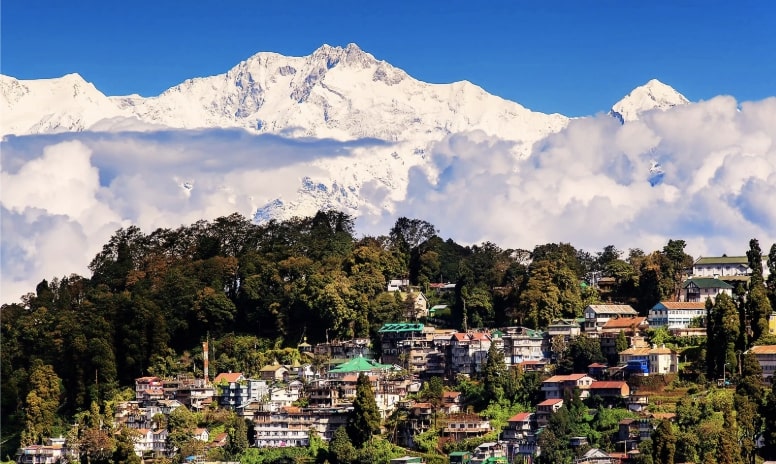
Darjeeling Tour
The Queen Of Hills
Darjeeling is a town in India's West Bengal state, in the Himalayan foothills. Once a summer resort for the British Raj elite, it remains the terminus of the narrow-gauge Darjeeling Himalayan Railway, or “Toy Train,” completed in 1881. It's famed for the distinctive black tea grown on plantations that dot its surrounding slopes. Its backdrop is Mt. Kanchenjunga, among the world’s highest peaks.
Full Details
- Package: 4D - 3N
- Persons: 2 Person
- Coverage: Travel, food and accommodation
- Cost: 75K (INR)
Places we cover
- Mirik
- Ghopaldhara
- Pashupathi Nagar
- Simina
- Jorephokri
- LapcheJagat
- Ghoom Station, Meusume, Monestary
- Tiger Hill
- Lamahatta
- Lapchu
- Batasia Loop
- Dali monastery
- Chowrasta
- Darjeeling Town
- Ropeway
- Zoo
- Happy Valley Tea Estate
- Chitre Tea Garden
- Lebong
- Kurseong
- Kalimpong (Dist)

Sikkim Tour
The garden of the god of war
Sikkim is the northeastern state of India and shares an International boundary with Nepal in the west and Bhutan in the east. Recognized as the least populous state of India, Sikkim is also known to be the host of the third highest peak in the world, Mt Kanchenjunga. Nestled in the Eastern Himalayan region the state is notable for its rich biodiversity, subtropical climate, and heritage sites that attract tourists from all over the world. Surrounded by dense alpine forests around 35% of the state is covered by Kanchenjunga National Park which inhabits rare and endangered animal species.
Full Details
- Package: 4D - 3N
- Persons: 2 Person
- Coverage: Travel, food and accommodation
- Cost: 75K (INR)
Places we cover
- Lachung
- Gurudongmar Lake
- Tsomgo Lake
- Gangtok
- Rabangla
- Nathula Pass
- Pelling
- Zuluk
- Many more...
